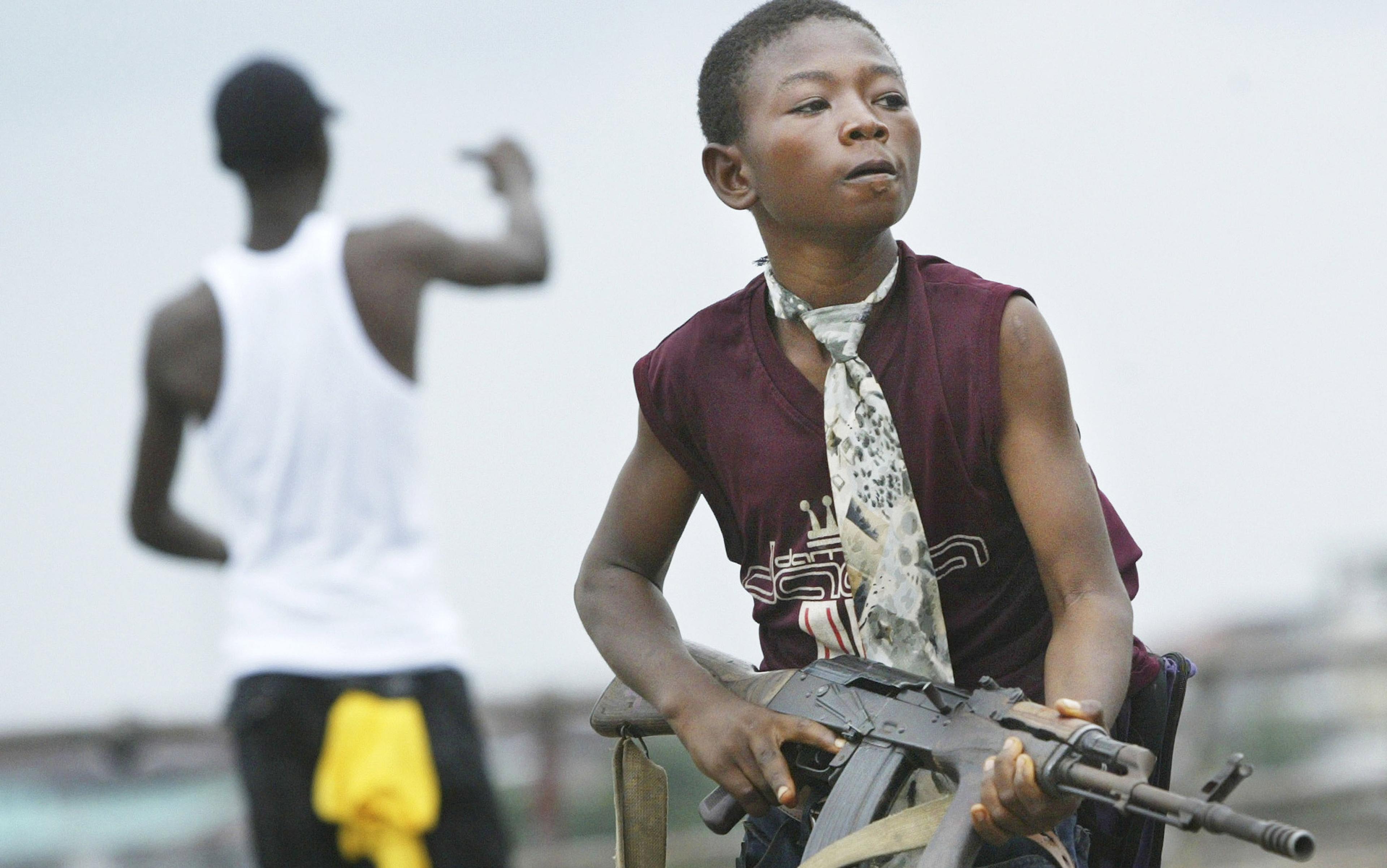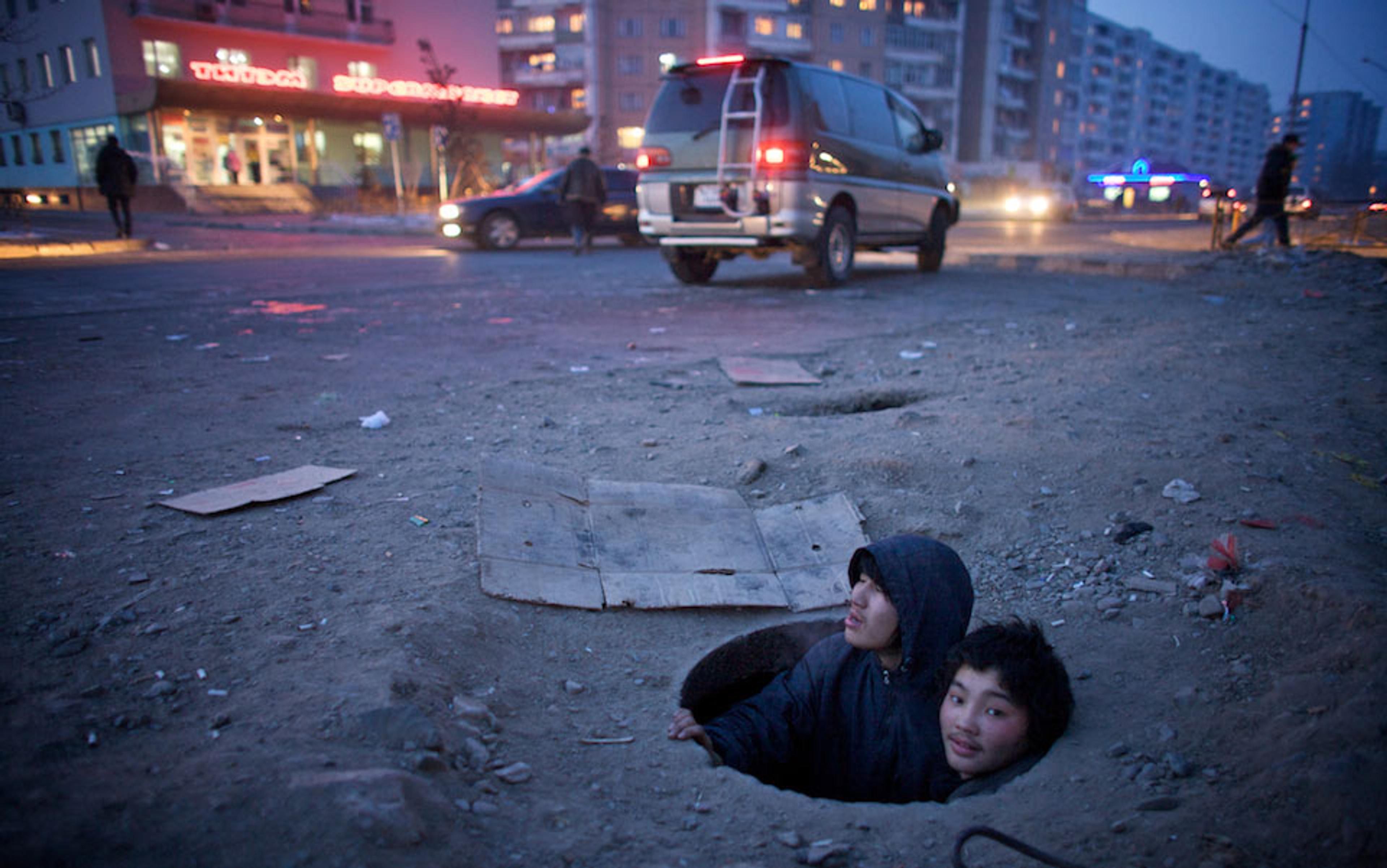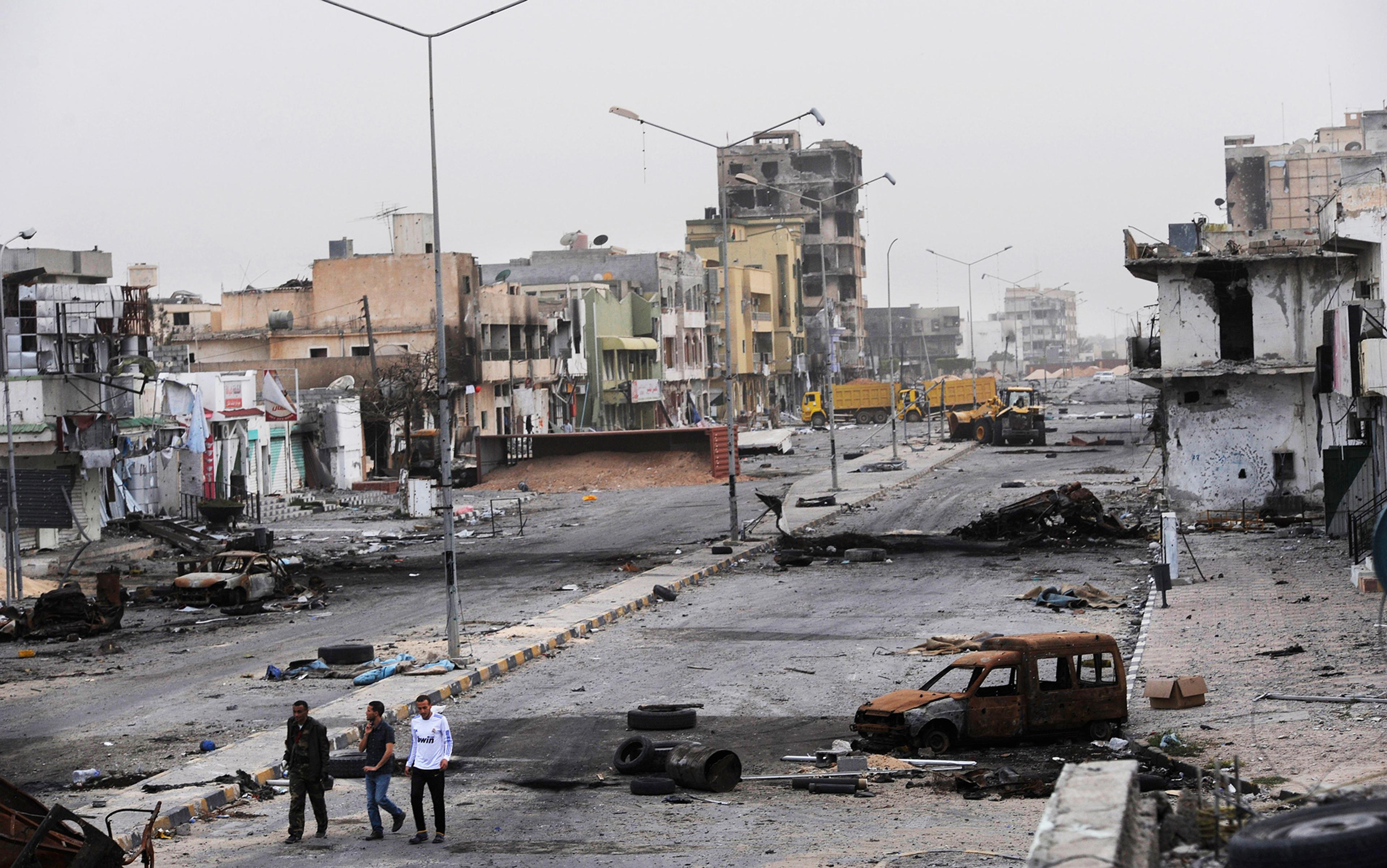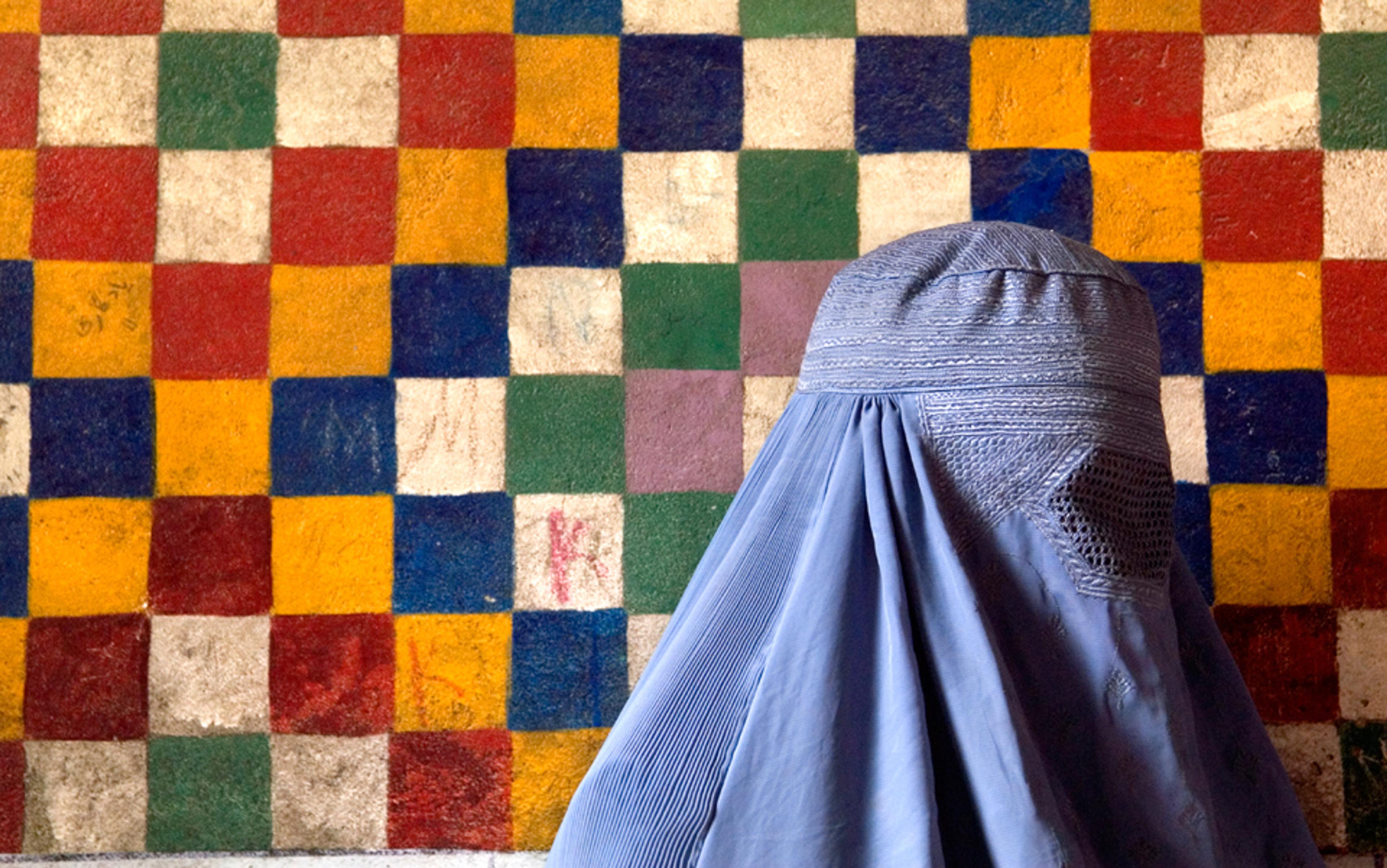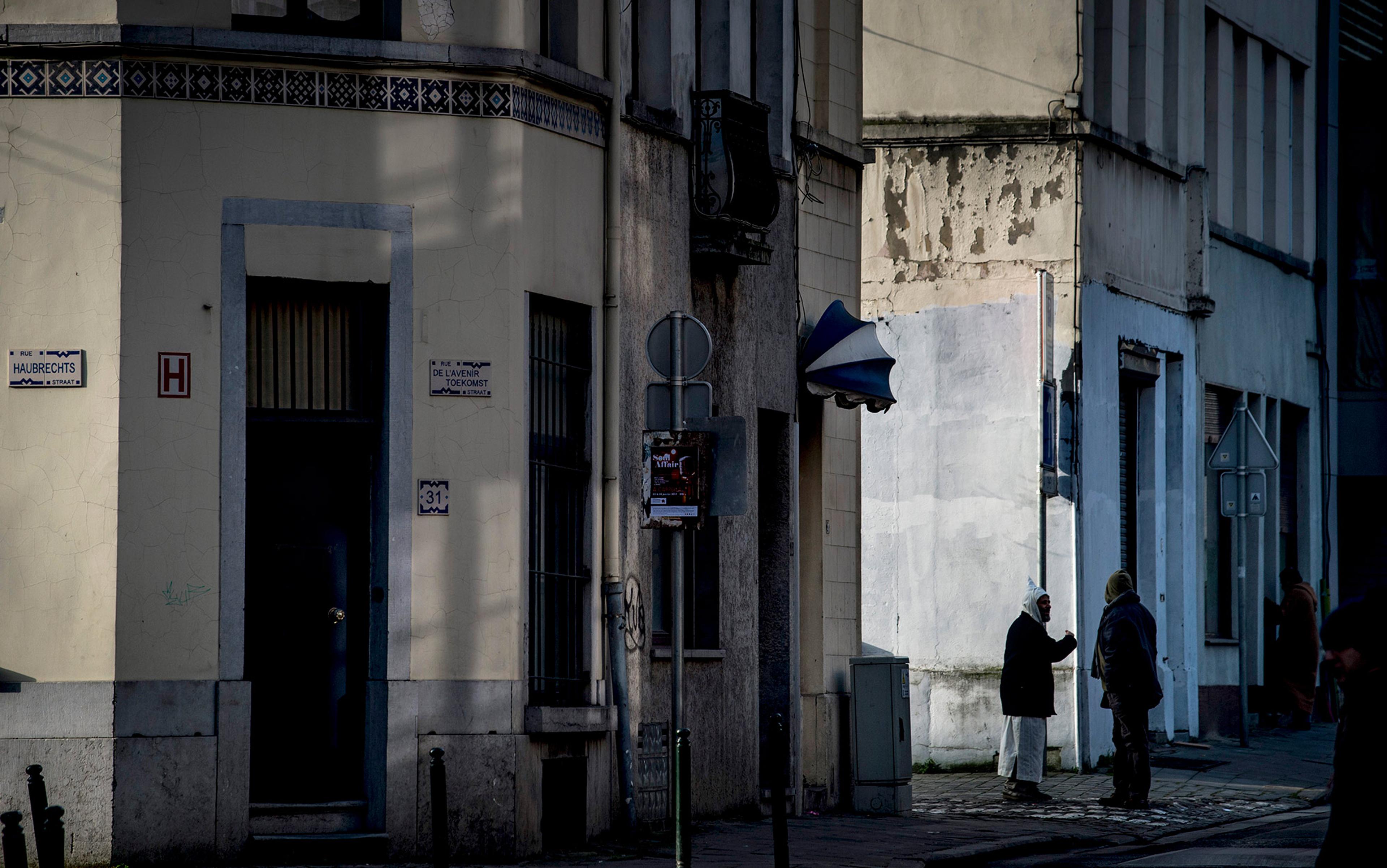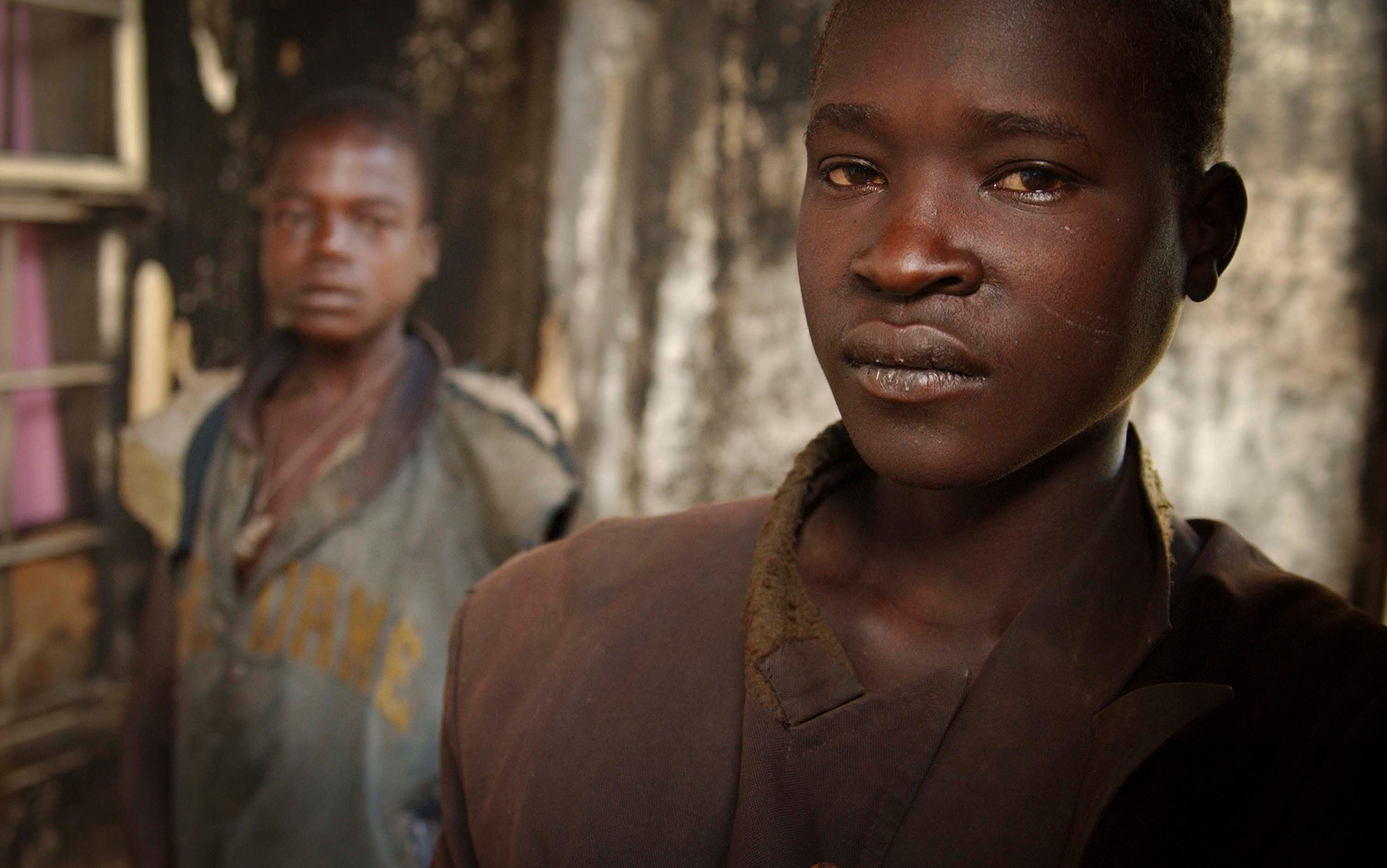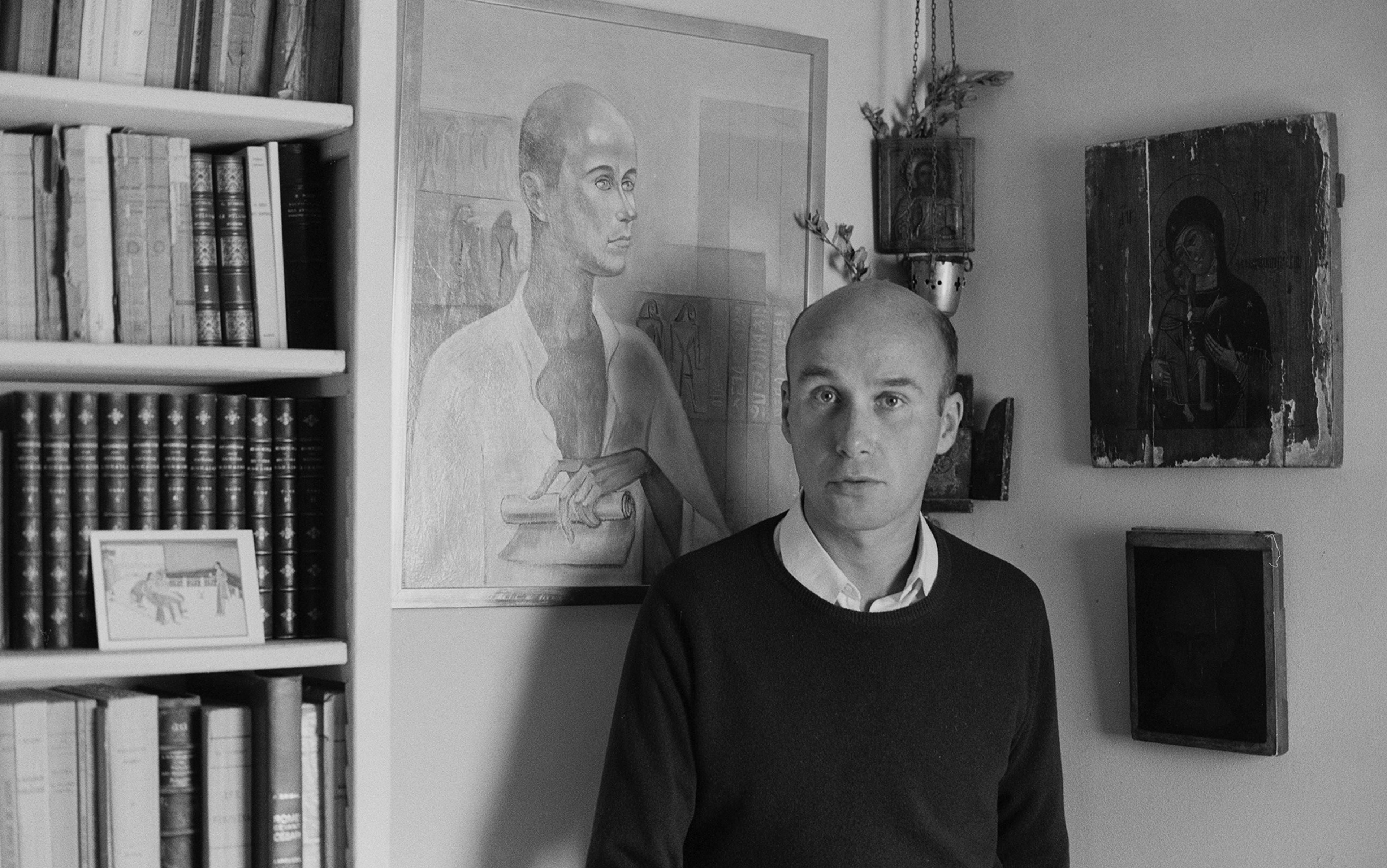The idea of child soldiers is itself young. International law organisations didn’t take up the issue until the close of the 20th century and, even then, they did so in a cautious and patchwork manner. The 1989 United Nations Convention on the Rights of the Child asks governments to take ‘all feasible measures’ to keep children under 15 from direct combat. In 2000, the UN General Assembly committed to raising the age to 18, and in 2002 the Optional Protocol on the involvement of children in armed conflict was made good – sort of. Non-state guerrilla groups are banned from recruiting anyone under 18, while states are allowed to enlist volunteers over 15. The child soldier as a criminal aberration, a violation of even the rules of war, is more or less a 21st-century idea.
But what it lacks in history, the child soldier makes up for with dramatic pathos. Whether it’s an aid organisation making a fundraising pitch or a news anchor plucking heartstrings, nothing conveys the depravity of far-off conflict quite like the image of a nine-year-old smoking a cigarette and toting an AK-47. The memoir A Long Way Gone (2007) by the former child soldier Ishmael Beah tells the now-familiar story of forcible recruitment at 12, drugs, coercion and four years of violence, before a rescue by the United Nations Children’s Fund (UNICEF). Though a lot of the facts are now disputed, Beah’s stories of Sierra Leone helped to establish the child soldier as an archetype of misfortune.
Over the past 20 years, non-governmental organisations of varying size have sprung up to remove minors from combat around the world. In 1998, eight major human‑rights groups, including Amnesty International and Human Rights Watch, teamed up to form the Coalition to Stop the Use of Child Soldiers; four years later they established 12 February as ‘Red Hand Day’ to raise awareness and stop the use of child soldiers. Child‑soldier activism reached a popular crescendo with the viral video KONY 2012 from the missionary group Invisible Children, made to promote their campaign to arrest Joseph Kony, the head of the Ugandan rebel Lord’s Resistance Army.
The child soldier that haunts the Western imagination is kidnapped, brainwashed, drugged, and forced to commit atrocities until you, the Western donor, do something to stop the tragedy.
War, as it is said, is hell, and no war has ever exempted children, either as victims or combatants. Our recent attention to the practice of child soldiering is less about changes in the nature of modern combat and more to do with the globalising ideal of childhood as a sheltered period of development. As Helen Brocklehurst, a lecturer in international relations at Swansea University in Wales, writes in her essay ‘Childhood in Conflict: Can the Real Child Soldier Please Stand Up?’ (2009), the emergence of the phrase ‘child soldier’ ‘marks the point at which a society’s conception of childhood became incommensurable when harnessed to its concept of warfare’. As it so happened, we reached this point right around the time capitalism defeated communism and the end-of-history theorists gleefully declared there were no wars left to fight. What remains is pacification, to clean up the crazy or evil groups who decline to get with the program.
In this way, the child soldier comes to stand for all illegitimate armed groups, whose motives are always irrational – as are those of the child soldier. Their fighting is a misguided response to trauma, or the result of cult-style programming, or is forced by the threat of violence from a monomaniacal strongman. Child soldiers are victims as well as perpetrators, just like all non‑state combatants are victims of their own foolish intransigence. In the age of liberal democracy and non-violent resistance, all insurgency is as unnatural as an adolescent lieutenant. And since I can find no historical record of a popular uprising that did not include teenagers (including America’s own), any people’s revolution is a de facto violation of international law. Once a militia anywhere in the world is accused of using child soldiers, the West is self-authorised to intervene and restore order. Kony 2012 was a good internet joke, but it also led directly to congressmen in both houses and parties calling for an increased US presence in central Africa.
The use of children in combat may be historically uncommon, but it wasn’t illegal or surprising that adolescents went to war. We know this in part because we’ve kept past ‘child soldiers’ alive in history and legend. In his book Reimagining Child Soldiers in International Law and Policy (2012), Mark A Drumbl cites just a few examples: Carl von Clausewitz, a Prussian general and the author of On War (1832), joined the Prussian army at 12; Alexander the Great became regent and quelled a Thracian rebellion at 16; and Joan of Arc was also a teenager when she petitioned the king for permission to travel with the army to Orleans in 1429. David was even more precocious when he slew Goliath and ascended to the throne. And there were teens at the Boston Tea Party in 1773, while the 17-year-old Samuel Maverick was one of five colonists killed at the Boston Massacre in 1770. Drumbl also includes the civil rights activist Claudette Colvin, who at the age of 15, nine months before Rosa Parks, refused to give up her bus seat. The list goes on, and for all the names we know, there are many more lost to time.
Now we’ve outgrown child soldiering, we can look back on it as a testament to the bravery of our ancestors
In these stories, the children’s youth wasn’t a sign that their cause was corrupt or misguided. On the contrary, inspired children were a sign of favour from God – or history. The presence of child soldiers today immediately depoliticises the conflict and renders it a question of criminality, but child soldiers in old war stories raise the question of the future, which is to say now. History’s winners can take pleasure in past battles, they can place themselves in the shoes of precocious soldier-children because they know how the story ends: liberal capitalist democracy, the nation-state system, the UN. Now that we’ve grown out of child soldiering, we can look back on it fondly, as a testament to the foresight and bravery of our ancestors. Whatever they did, after all, got us here.
As long as they’re separated from contemporary geopolitics, child-soldier narratives are considered perfectly appropriate for US kids. Think about the boy wizard Harry Potter: a war orphan seized from his surviving relatives at age 10, Harry is brought to a secluded academy run by former militants, told he is destined for glory, and taught to fight. When the warlord who killed his parents returns to make a power play, the teenage Harry raises and trains an armed cadre of his fellow high-schoolers to fight internal and external enemies. One of these child soldiers is killed in an ensuing battle. Post-war, Harry and his best friend Ron, both still teenagers, join the new government’s military police unit. ‘They are now the experts,’ the novels’ author JK Rowling told reporters in 2007, expanding on the epilogue of her last book in the series. ‘It doesn’t matter how old they are or what else they’ve done.’ The International Criminal Court might beg to differ, but they’re not in the habit of prosecuting winners.
In fictional ‘just war’ scenarios, such as the rise of Voldemort or a communist invasion, Americans are far less conflicted about whether or not children can choose to be guerrillas. Though US territory hasn’t been occupied by a foreign power since the War of 1812, that doesn’t stop us from imagining what we would do if it happened. In the movie Red Dawn (1984), the Soviet Union and its Cuban allies invade and quickly conquer the US. (In the 2012 remake, the invader is North Korea.) The protagonists are a scrappy group of Colorado high-schoolers who take to the hills and mount an offensive against the Ruskies. The Wolverines (named after their school mascot) train and fight and die, but there’s no real question as to whether they should surrender or if they’re too young to take on their responsibilities. At the end of the original movie, a war memorial stands for the Wolverines: ‘In the early days of World War III, guerrillas – mostly children – placed the names of their lost upon this rock. They fought here alone and gave up their lives, so that this nation shall not perish from the earth.’
When it comes to the homeland, no international body can tell our teens to stand down.
Race is one of the reasons it’s easier for Western media consumers to imagine teenagers as heroes in Colorado or magical Scotland than in Sri Lanka or Colombia. If we’re exposed only to frozen images of these children as objects of sympathy – soft-eyed, mute, sad – it’s harder to put ourselves in their position and imagine what their motivations might be as individuals.
The Harry Potter series underestimates the lifelong trauma these children would experience, never mind whether they should be immediately taking jobs as civil servants. International standards would call for them to be demobilised and reintegrated into the civilian population. But at least in Harry Potter or, for that matter, The Hunger Games novels by Suzanne Collins, children get to experience a range of emotions, to make choices and have intentions. Meanwhile, the aid world’s portrayal of pre-demobilisation child soldiers presents them as one-dimensional, not culpable for their actions because of coercion or brainwashing. This flat image serves the interests of aid organisations and the UN General Assembly, but it requires us to ignore the voices of the children themselves.
For example, in 2009, UNICEF and Sri Lanka teamed up for a media campaign called ‘Bring Back the Child’ which aimed to discourage underage recruitment, specifically by the rebel group Liberation Tigers of Tamil Eelam (LTTE). In the posters, black-and-white photos of the child soldiers’ unsmiling faces are overlaid on full-colour photos of their bodies engaged in more age-appropriate pastimes. Beside the picture of a girl, the text reads: ‘She wants to be a dancer, not a child soldier.’ A boy wants to play cricket. The rhetoric assumes the child soldiers are abducted or coerced, but surveys of youth recruits to the LTTE suggest that this is relatively rare. In one survey, 18 of 19 teenage boys from the LTTE said they joined voluntarily.
But can a child truly volunteer to join an army? Even when they enlist by choice, child soldiers do so under a set of constraining circumstances. UNICEF makes the choices sound easy: war or dancing, war or games, war or be a doctor. No rational child would pick the former for themselves, and that’s posed as evidence that their freedom has been taken from them. But when the choice is ‘soldier or victim’, voluntarism takes on a different meaning. In northeastern Nigeria, the Civilian Joint Task Force (CJTF) has recruited thousands of teenagers into the armed self-defence groups organised to protect villages from Boko Haram militants. There is no way for these children to opt out of the conflict; in The Daily Beast this March, the Nigerian journalist Philip Obaji Jr puts their choice in stark terms: ‘Fight Boko Haram or be killed by them.’ Some teenagers, understandably, have picked the former.
Young women described their enlistment as a flight from sexual violence and other exploitation into a structured military environment
If boy soldiers are depicted as intrinsically vulnerable, then girl soldiers are doubly so. Consumers of Western media have learned to make the mental leap between young women in danger overseas – and rape. When advocates say 40 per cent of child soldiers are girls, they’re playing on their audience’s worst fears about the role of women in the global South. In an effort to record the stories of girls themselves, in 2002 a team of local researchers led by Yvonne E Keairns of the Quaker UN Office interviewed 24 young women from across four conflicts: Angola, Colombia, the Philippines, and Sri Lanka. In Angola, Keairns’ worst fears were confirmed, with girls forcibly conscripted and sexually abused. But of the other 18 girls, 17 had joined guerrilla groups voluntarily, and their testimony about their choices sheds light on the complexity lacking in our portrait of child soldiers.
Contrary to Keairns’ expectations, the interviews found that three of four guerrilla groups had strict rules regarding sexual relationships between soldiers, including explicit procedures for obtaining and confirming women’s consent. Many of the young women interviewed described their enlistment as a flight from sexual violence and other forms of exploitation in the home into a structured military environment. When these groups did exercise reproductive control, it was usually in the form of forced contraception and abortions to maintain the fitness of the fighting corps. One Sri Lankan militant describes escaping her home on the eve of an unwanted marriage. The statements of the Filipina militants are especially striking: the girls report taking part in a culture of mutual criticism, where they had plenty of time to study, and the group listened to their voices. Training included a lecture on strict sexual harassment policies. ‘In the seminar, it was made clear that it was absolutely prohibited to take advantage of women,’ one interviewee said. ‘I felt very safe; I had no fear.’
And, contrary to Western ideas about the agency of female child soldiers, a majority of those interviewed had made a calculated choice to become militants. These young women had experienced a wide spectrum of wellbeing and harm, but the ‘international community’ shoves them into a one-size-fits-all victim archetype. To assume all girl soldiers undergo the same violence as the combatants in Angola is to exclude three-quarters of their stories. ‘If it were not for the fighting,’ Keairns writes of the Philippines and Colombia, ‘the girls would have preferred life in the armed group over their life as a civilian.’ Aid organisations pursue a policy of ‘prevention, demobilisation, reintegration’ that does not fully take into account the variety of reasons children join guerrilla movements and why they might not want to reintegrate.
The child soldier is a recent idea, and we have barely begun to work out its contradictions. In the contemporary Western imagination, you can be a brave freedom-fighter or an exploited child soldier, but you can’t be both. The tension between these two ideas was laid bare last September in the magazine Marie Claire when the US journalist Elizabeth Griffin wrote about the women of the YPJ, or Women’s Protection Unit, a self-defence force of Marxist-feminist Syrian Kurds currently battling the Islamic State (IS). Rather than become refugees, many young Kurdish women have joined the YPJ to fight IS, though the group officially complies with the Optional Protocol.
The article originally included some of these teen trainees and combatants, saluting them as heroes, and the editors were so caught up in the story that they forgot they were applauding a war crime. Now an awkward editors’ note sits atop the piece online: ‘The efforts of the YPJ are remarkable but Marie Claire does not condone the use of child soldiers in any capacity. This article has been edited to reflect that.’ The manner in which they edited the piece to reflect the universal condemnation of child soldiering was to remove all mention of anyone under 18.
The flat portrayal of child soldiers necessitated by the state of international law says these children can either be traumatised victims or they will become invisible. When flesh-and-blood combatants don’t fit into the rhetorical agenda of existing nation states and supranational organisations, they get erased from the story or written into one that’s more convenient. As ‘child soldiers’, their agency is irrelevant – all the better to put them to work.
